I reach Bukhara at dusk. Just in time to find my hotel located in the old town before complete darkness but too late to appreciate the uniqueness of the townscape. Thus, a quick night stroll in the neighbourhood gifted me a nearly mystical glimpse on the old town.

Located in an oasis at the edge of the Kysylkim and Karakum Deserts, Bukhara is over 2.000 year old. In the last centuries BCE, it grows early as vassal state of the Persian Empire and as spiritual and commercial centre along the Silk Road.
Pre-Islamic Bukhara is exposed to various cultures and religions traveling along the Silk Road. Bouddhism, Nestorian Christianity, Zoroastroism and Judaism leave a strong footprint in Bukhara prior to its gradual islamisation between the mid-7th and mid-9th century.
Bukhara’s first golden age spans from mid-9th to the end of 11th century. Then largest town in Central Asia and capital of the Persian Samanid Empire, Bukhara experiences a strong revival of Persian culture after a two-century Arabic period. Let aside its strong economic role, Bukhara rivals Bagdad as the intellectual centre of the Islamic world with hundreds of mosques and madrasas.
The erudite Avicenna (c. 980-1037) illustrates the apex of this brilliantly open and fertile period. Born near Bukhara, he masters medicine, mathematics, metaphysics and philosophy by the age of 18. Prolific writer, he produces an extensive corpus of works, drawing also on thorough study of Greco-Roman, Persian, and Indian texts. Until his death in Hamadan (Iran), he publishes some 450 volumes mainly on early Islamic philosophy and medicine, amongst them famous The Canon of Medicine.
The 16th century represents Bukhara’s second golden age. Under the Uzbek Sheibanids, the town becomes the capital of the Bukhara Khanate. It plans and develops most of the exquisite urban landscape visible nowadays.
As one of the main lighthouses along the Silk Road in Central Asia, Bukhara had more than its share of troubled times. Alexandre The Great (4th c. BCE), Genghis Khan (13th c. CE) and Timur (14th c. CE) all conquered Bukhara militarily.
According to Unesco, Bukhara represents the most complete example of medieval city in Central Asia. To me, Bukhara appears charming and authentic, more genuine than museum-city of Khiva and than the flashy Samarkand.
Bukhara’s charm relies less on single historical monuments than on its urban landscape and fabric. It exemplifies the idea of a whole greater than the sum of its parts. Furthermore, walking the city centre is a colourful social journey as the historical quarter is vividly lived-in.
Ark and Ismail Samai mausoleum
This is what I do at dawn on the following day. The old town wakes up gently, caressed by a soft and warm sunlight. Residents start their day, fully integrated into their amazing townscape. I feel blessed.
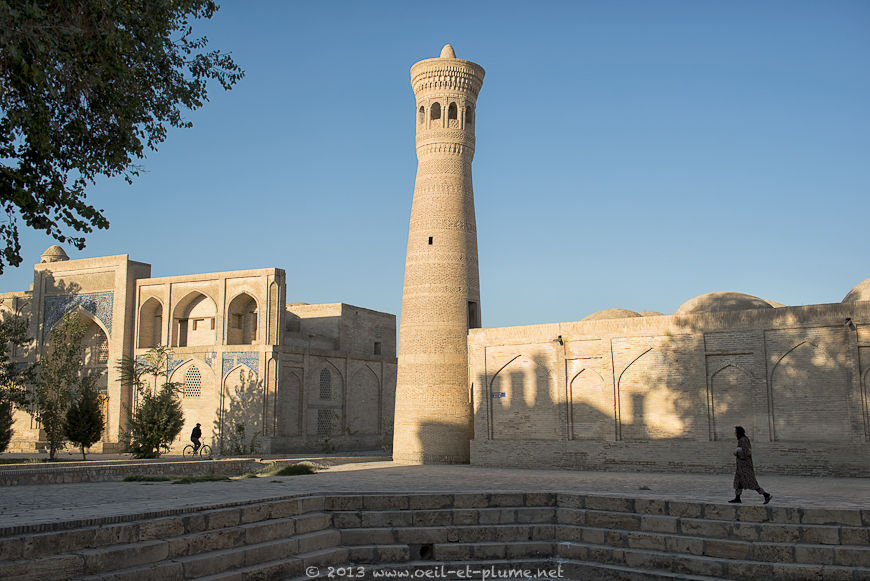
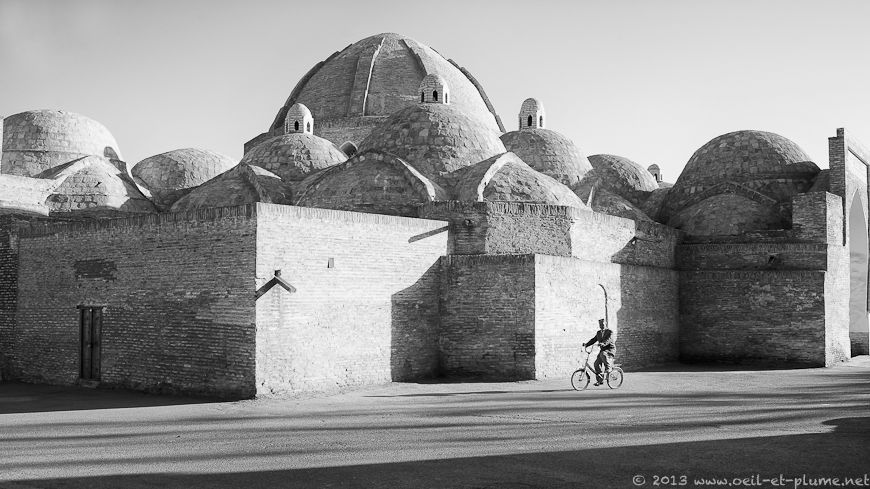
Where to start? I decide to head first to the Ark (the fortress), which was not only a citadel but also a political centre and a small town in the bigger Bukhara. This is a tremendous brick construction, all in massive but yet harmonious round shapes. Heavily bombed by the Bolshevik army in 1920, the complex is undergoing serious repairs of its outer walls.
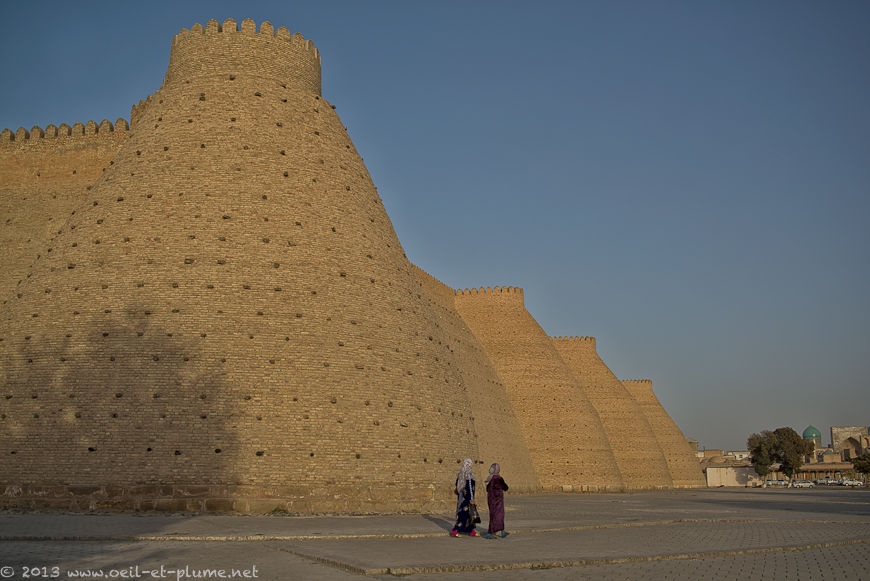

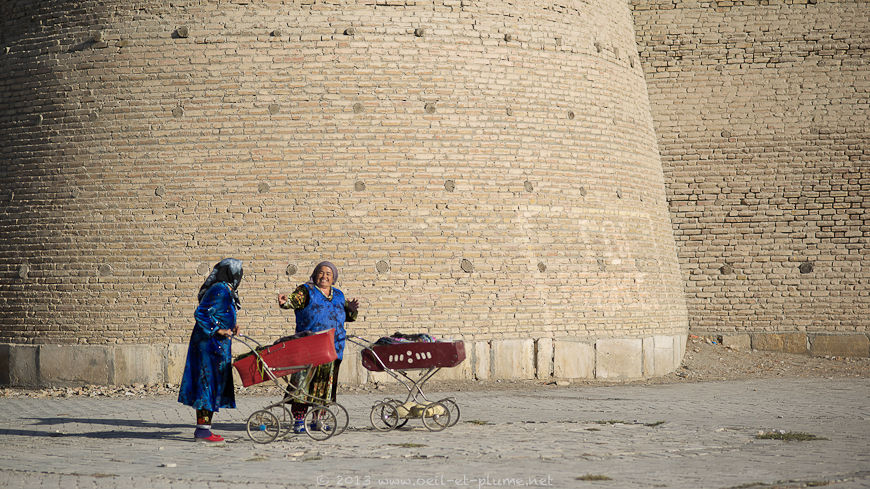
The visit of the Ark offers is rather disappointing, as most of the internal structures were destroyed. The overall view of the citadel orients my further visiting steps. I spot also a fascinating vintage photography of Bukhara residents.
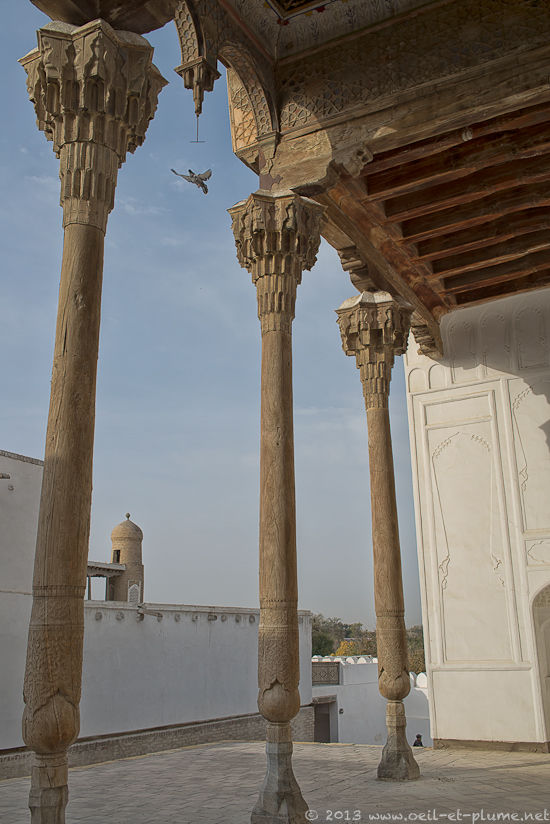
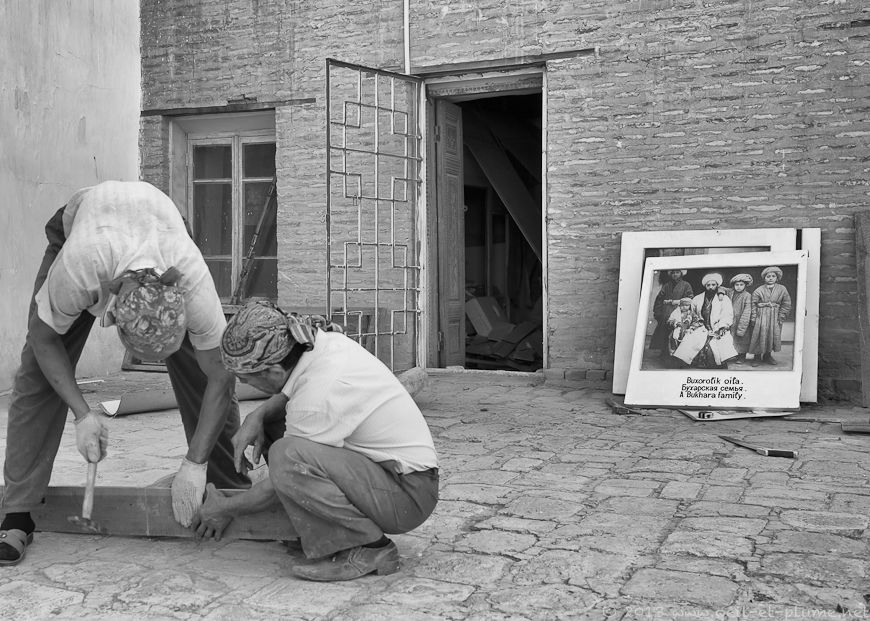
Back in front of the Ark’s main entrance, I remember how risky it was for a 19th-century Westerner to venture into Bukhara. In 1835, the French Orientalist Jean-Jacques Pierre Desmaisons visits Bukhara disguised as Muslim merchant. In 1842, two British military officers sent as officially on a diplomatic mission to the Emir Nasrullah Khan are arrested, imprisoned and beheaded in front of the fortress.
Bukhara Emirs traditionally worshipped in Bolo Khauz mosque, located at a walking distance of the Ark. The mosque displays a beautifully carved and painted wooden ceiling dating 19th century.
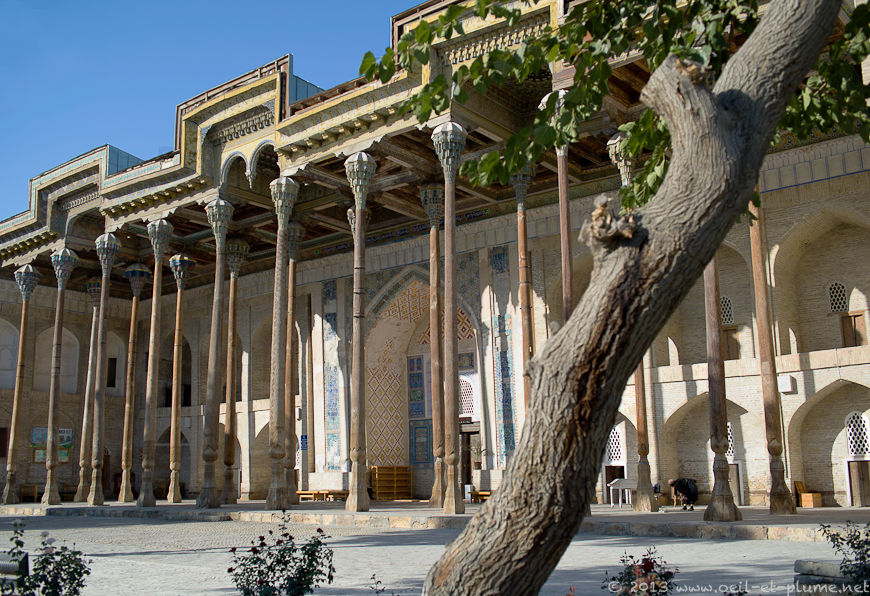
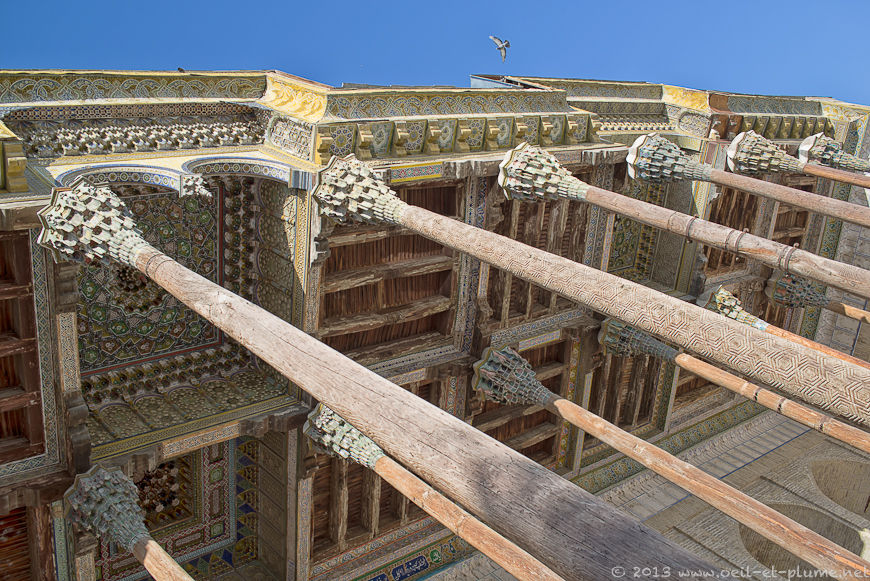
You may have noticed that doves invited themselves in some of my pictures. Bukhara is full of pigeons and doves. Bukharan people love them as other small and colourful birds at home too. Not sure to be very happy about it.
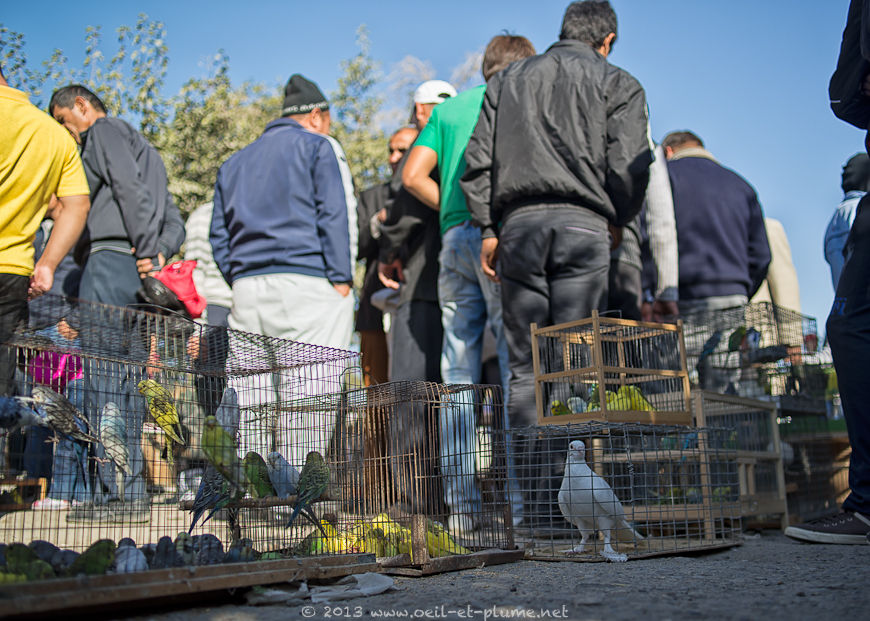
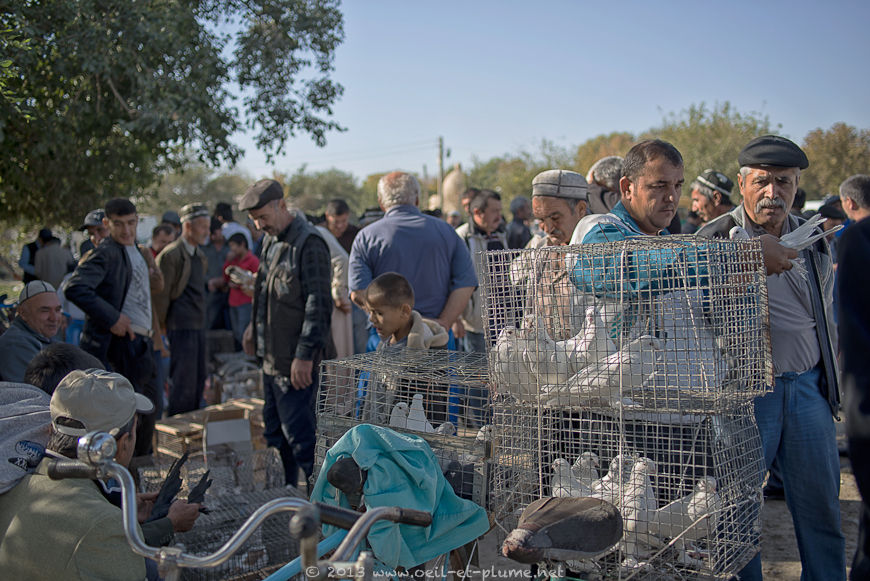
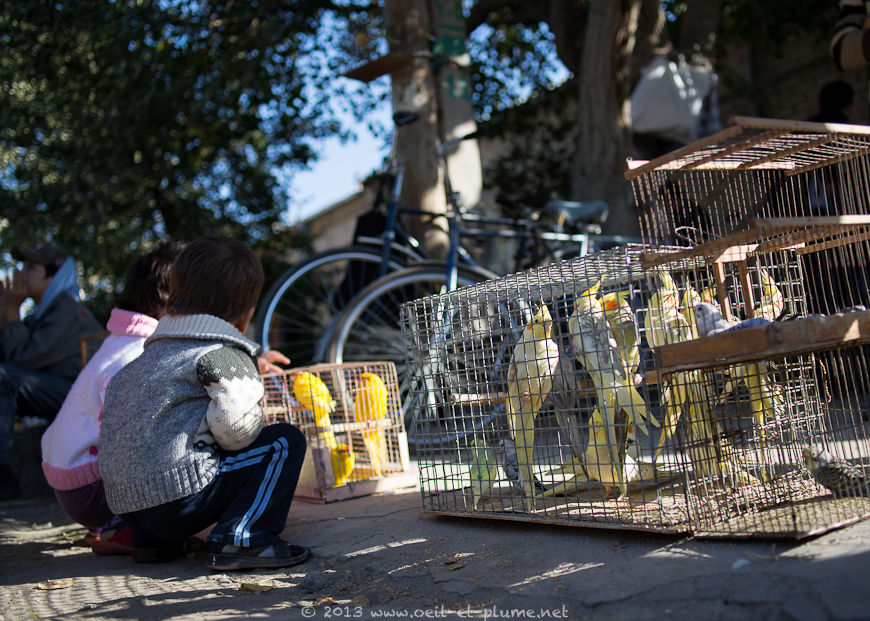
The Ismail Samai mausoleum represents the best surviving example of the 10th-century Islamic architecture in Central Asia. I am struck by what mankind can achieve with mud. Although the wall brick structure is rather gross from close, it looks very beautiful at some distance. Bukhara’s contemporary religious architecture draws proudly upon this prestigious legacy.
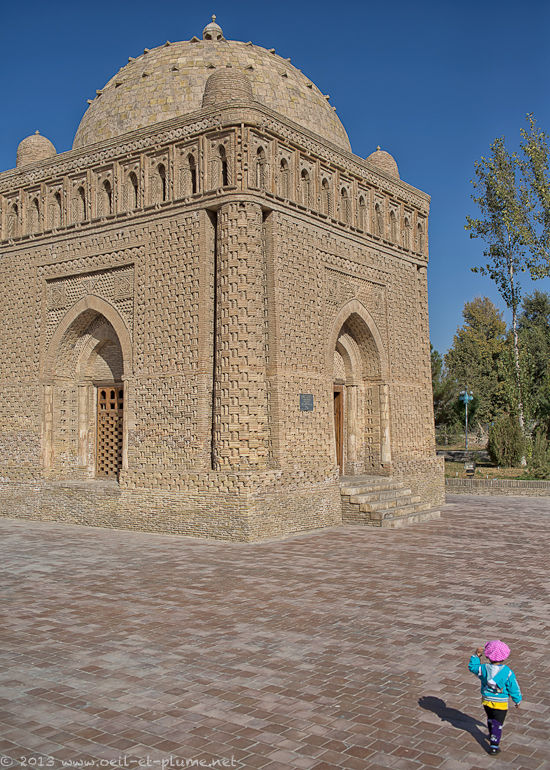
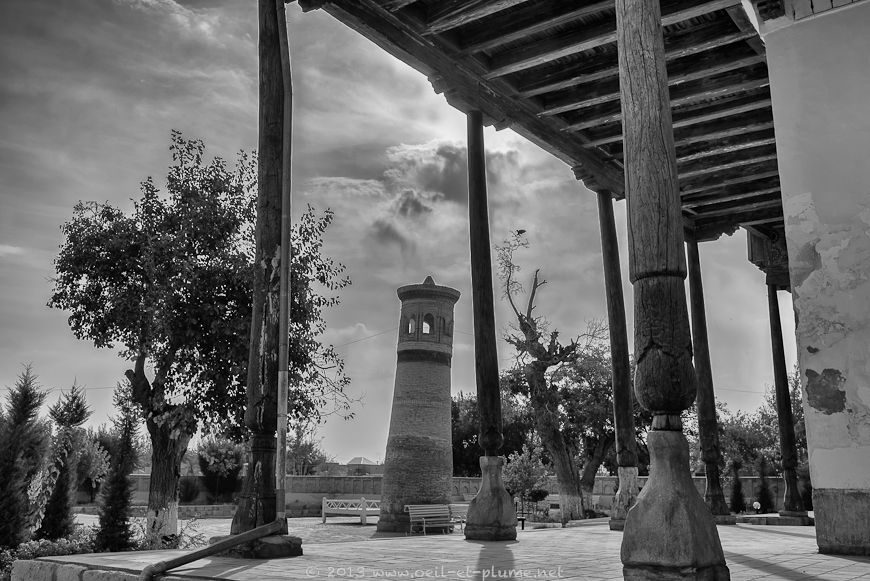
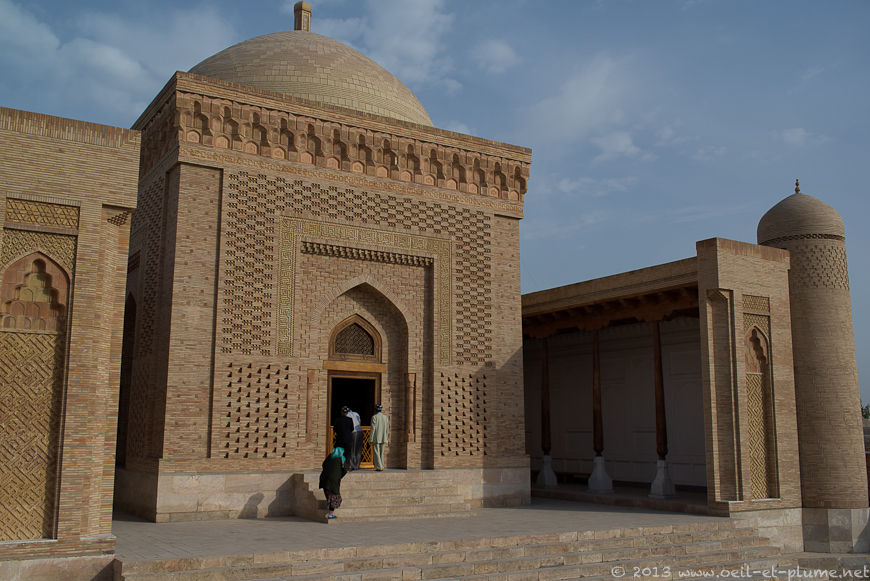
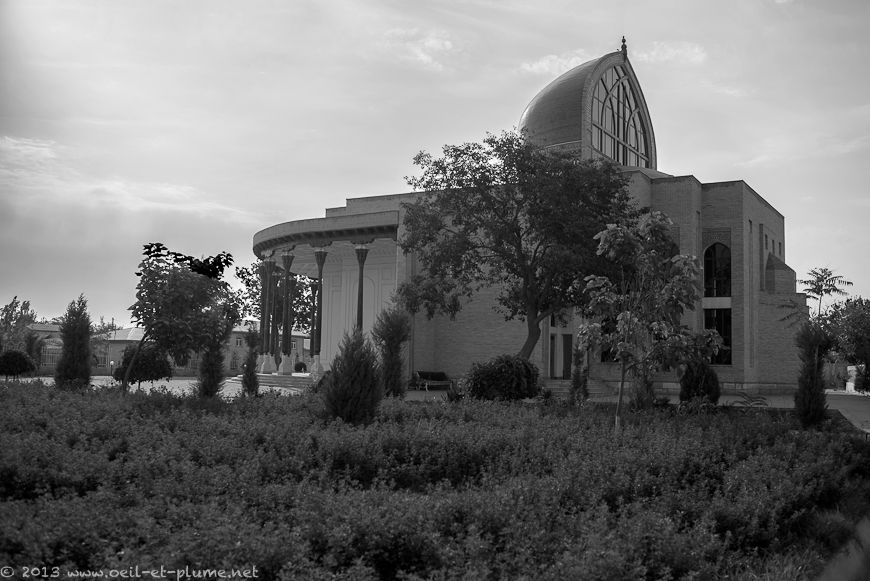
In late afternoon, I allow me spotting the core of Bukhara’s historical area, named Poi Kalyan (‘the foot of the Great’, in Persian language). Even from a distance, the complex looks gorgeous. If the foot of the Great is so beautiful, how should it be further up ? Anyway, this is where I will start tomorrow.
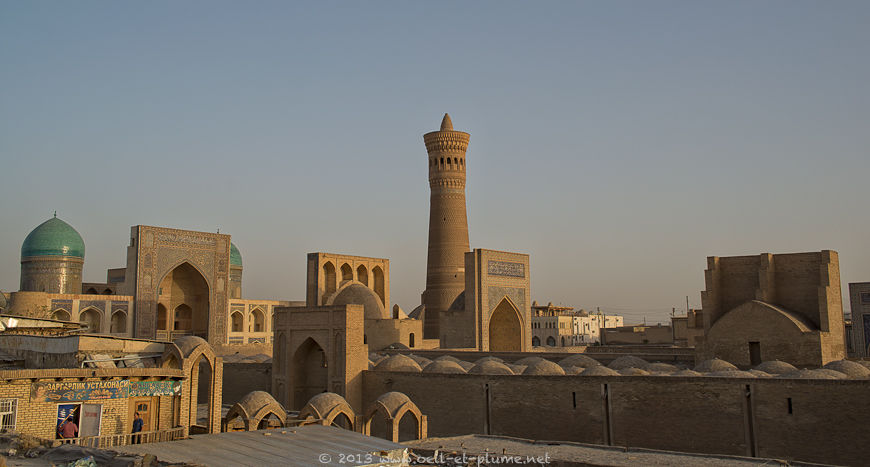
Poi Kalyan
Built in 1127, the 45.6 meter-high Kalyan minaret is the tallest of its kind in Central Asia. The minaret was also used as lighthouse to orient trade caravans reaching Bukhara. I tour again and again the tower bottom, raising my sight to admire the 14 bands of beautiful brick design. I remove my cap to better observe the delicate brick patterns up to the top of the minaret, as some illustrious visitors before me.
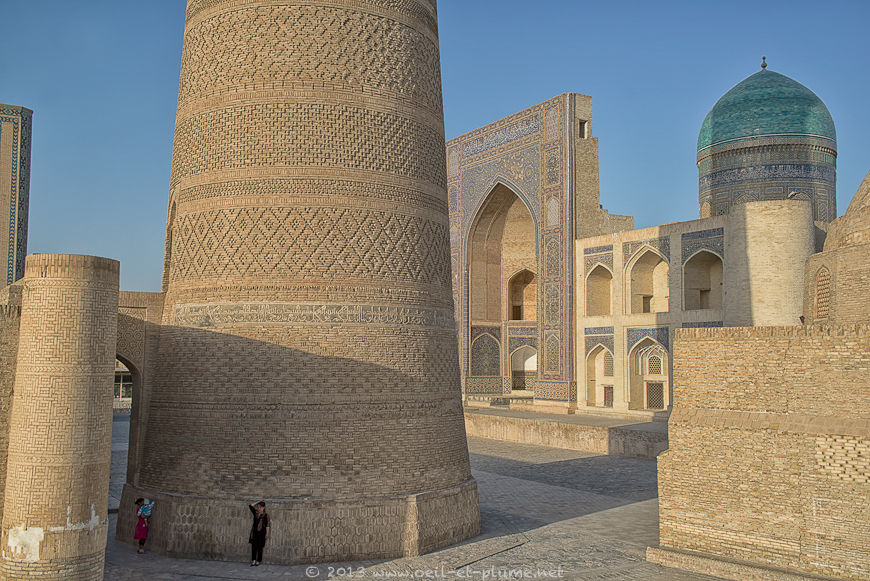
Local legend tells us that when the Mongol hordes conquered the city in 1220, their commander Genghis Khan raised the head so much in to look at the top of the minaret that his hat fell down to the ground. He would have said: “Such great monument forced me to take off my cap, even though I usually never do so !”
We know with more certainty that the Kalyan minaret, together with the Ismail Samai mausoleum, survivded Genghis Khan’s conquest of Bukhara. The rest of the town was pillaged and burned down.
Next to the Kalyan minaret, the Kalyan mosque and the Mir-i Arab madrasah were achieved in the 16th century during Bukhara’s second golden period (Sheibanid rule). I am lucky enough to visit the mosque in a sand-stormy day, perfect to retain most of worshippers and visitors in their hotel. Beautiful atmosphere there.
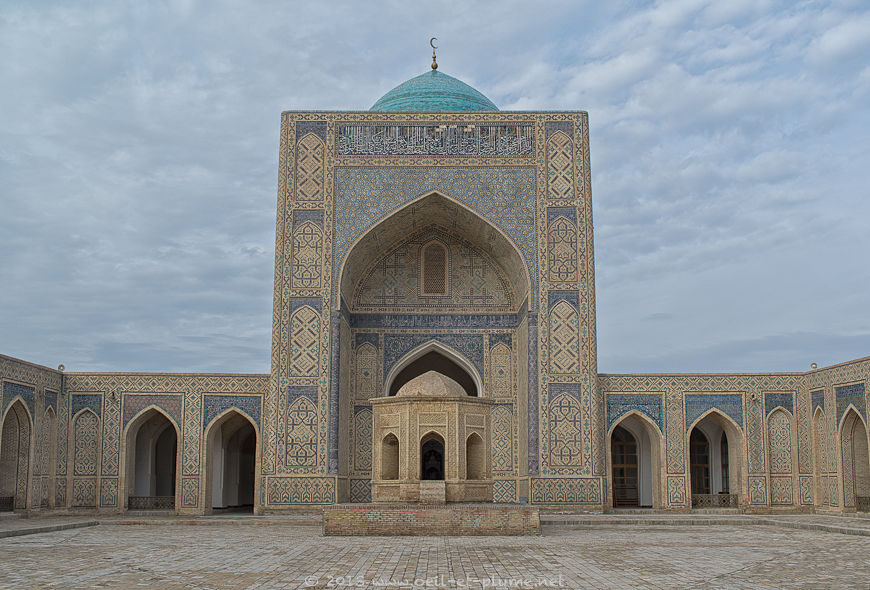
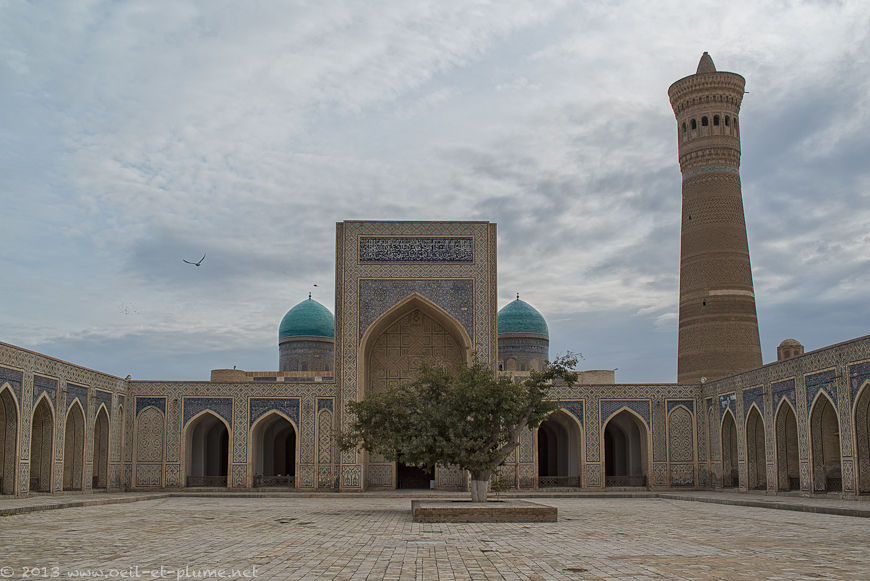
Also curious about secular matters, I mingle then with local economic stakeholders. The main bazaar of the old Bukhara is just next to Poi Kalyan. At some point, I feel like living in medieval times and to in the 21st century.

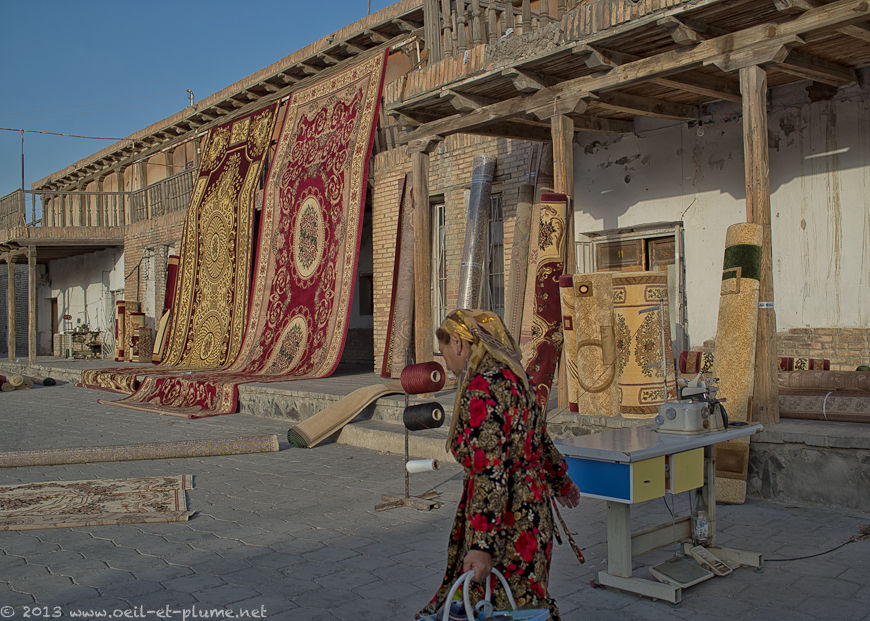
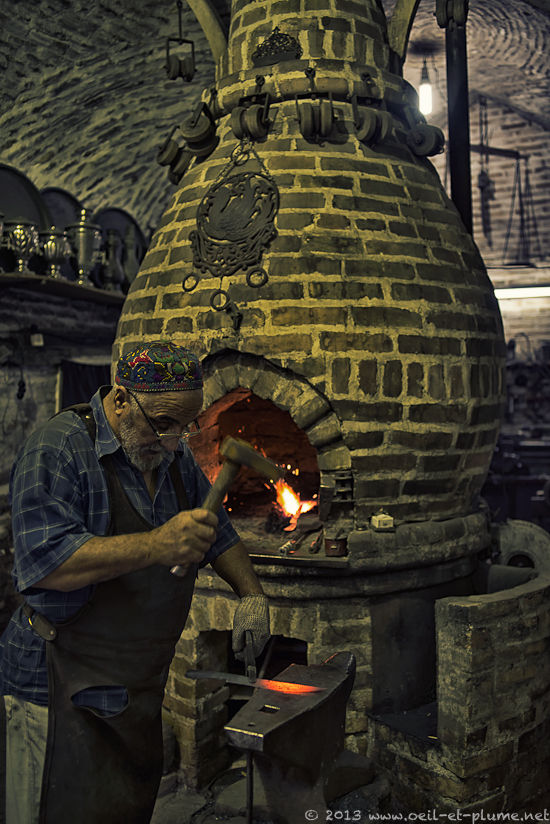
In late afternoon, sipping a hot tea on a terrace. Nobody around me, and few people down there. The scenery is astonishingly poetic.
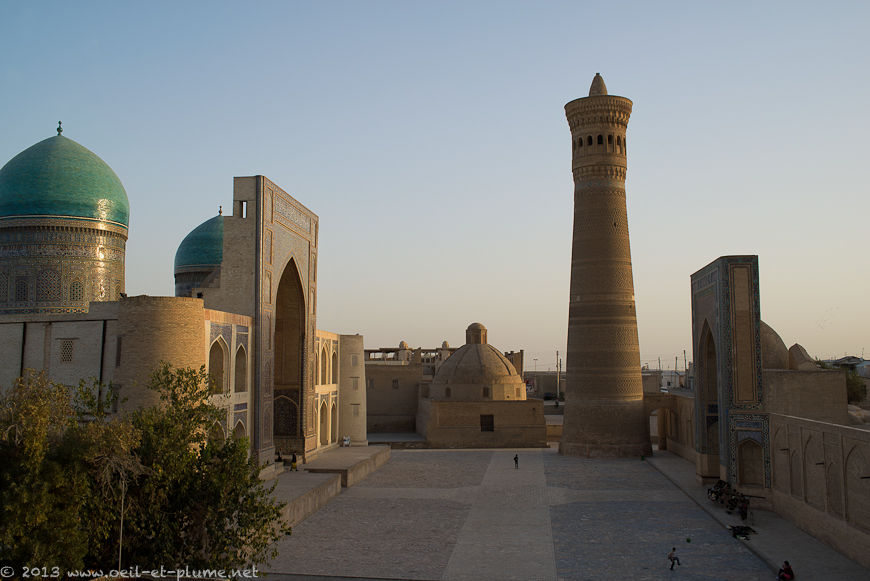
Street life
My last day already. I look for more contemporary insights of Bukhara. Men playing dominos, drinking and chatting in a tea shop; girls returning home. Some areas of the old town are still barely restored. Even if I don’t wish so, I am dragged into history at each street corner.
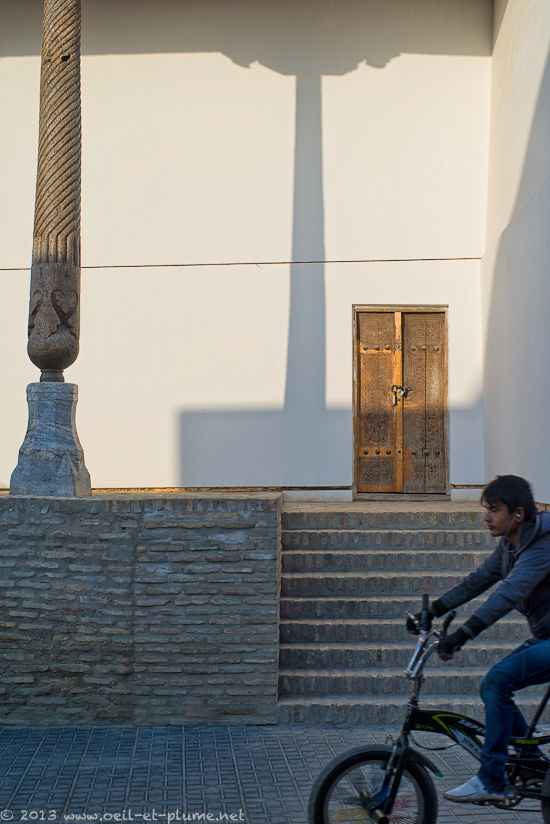
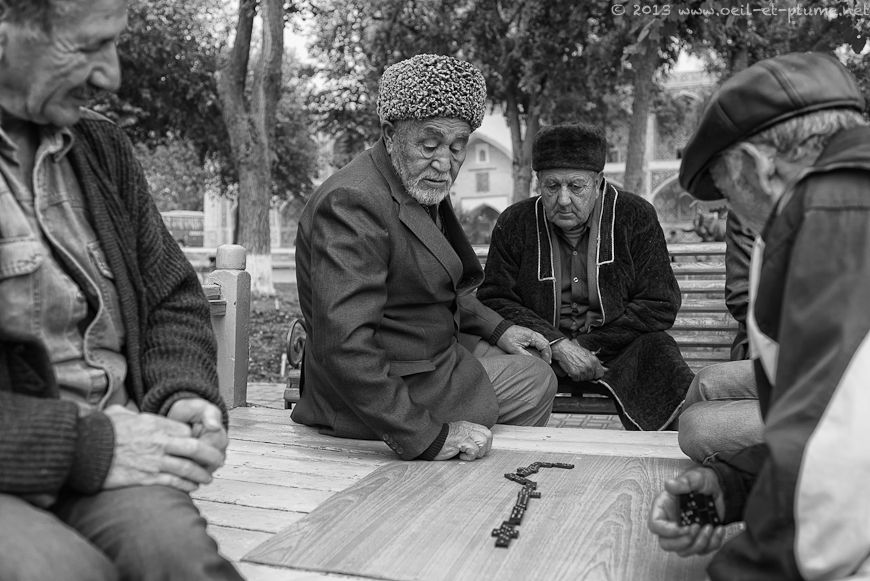
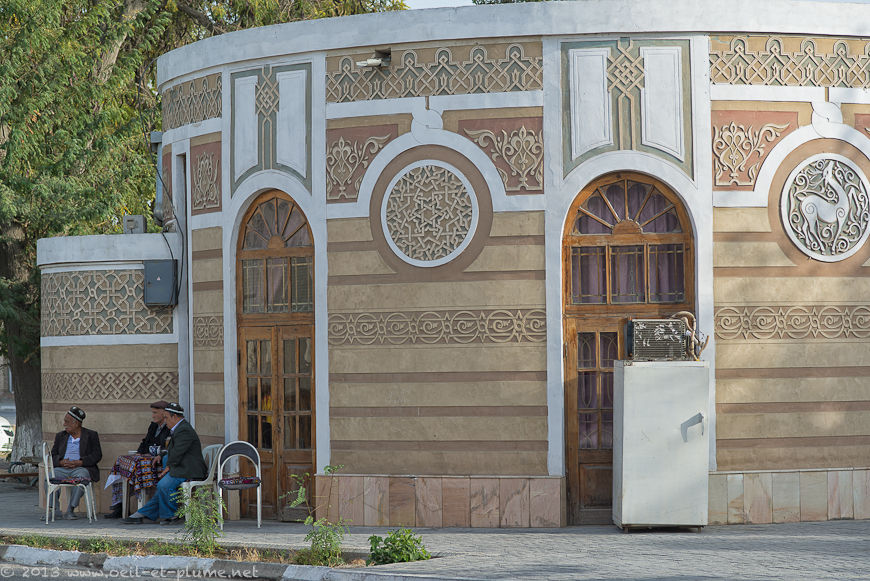
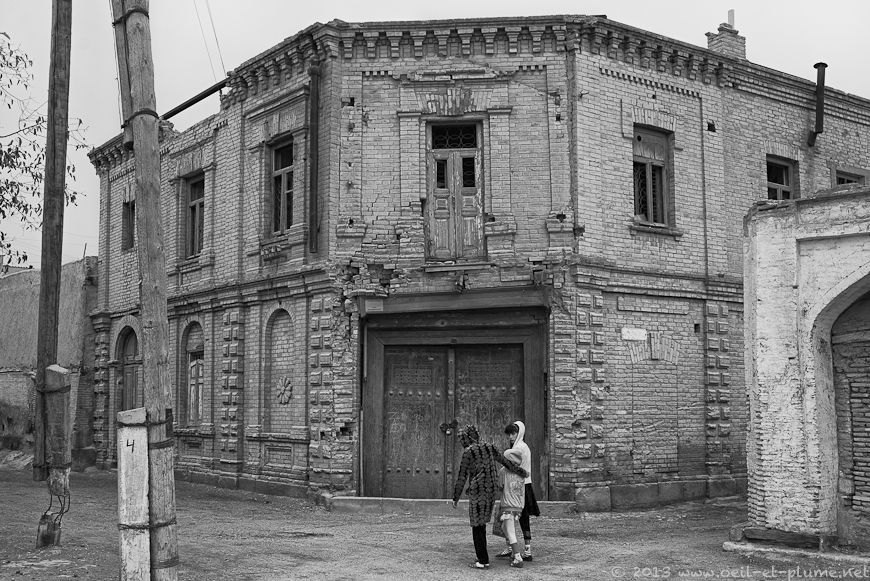
All of a sudden, I feel called by the bold sound of trumpets on the main square of the town. The family of broom inform the population about the wedding ceremony to take place soon. I join their parade across the old town until the bride’s home. There, her mother welcomes the crowd and invite the future in-law family in. I stay out, but catch up the young couple later during their portrait session. Passing-by women do not hide their curiosity…
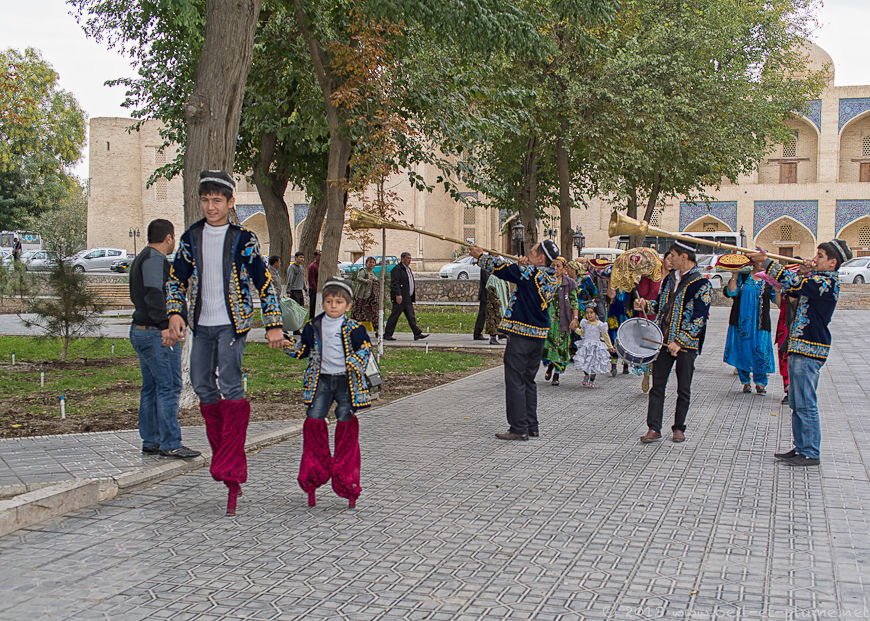
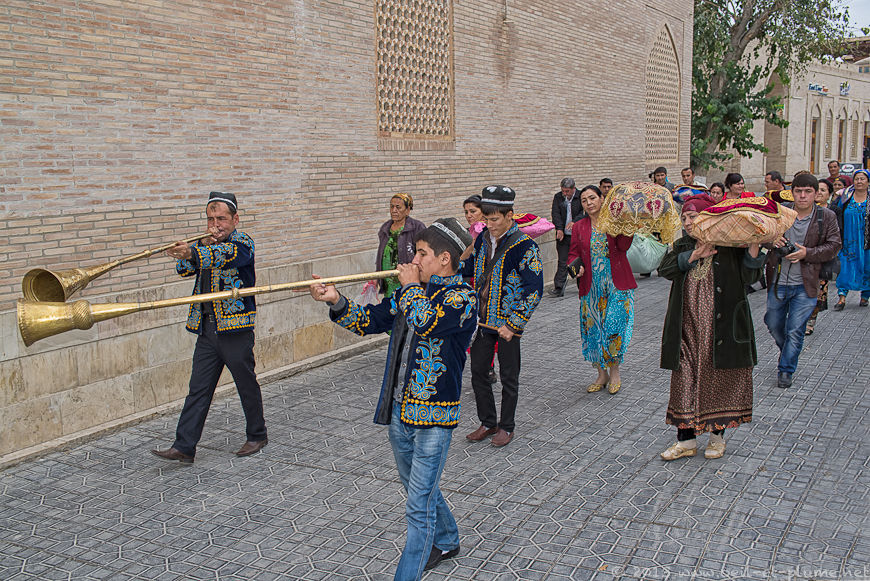
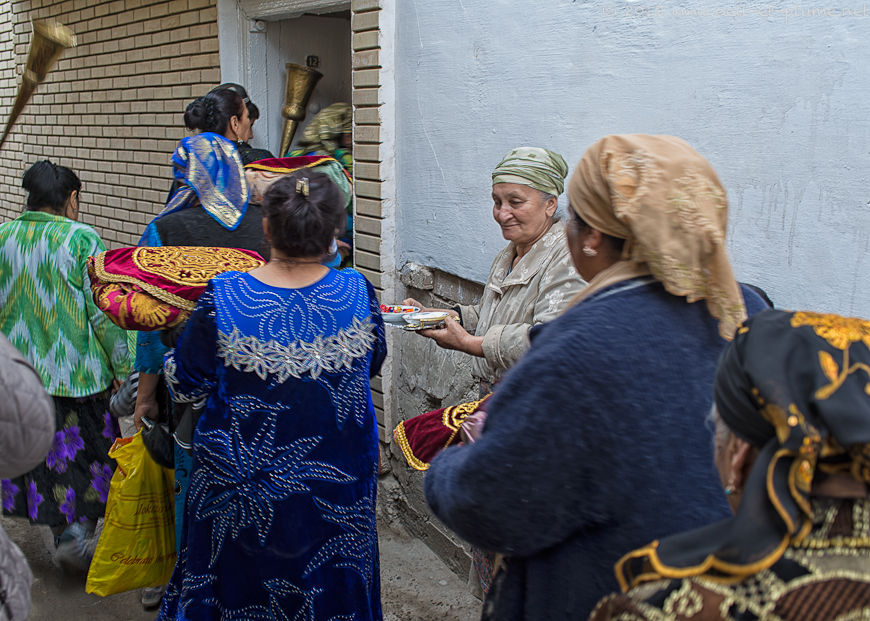
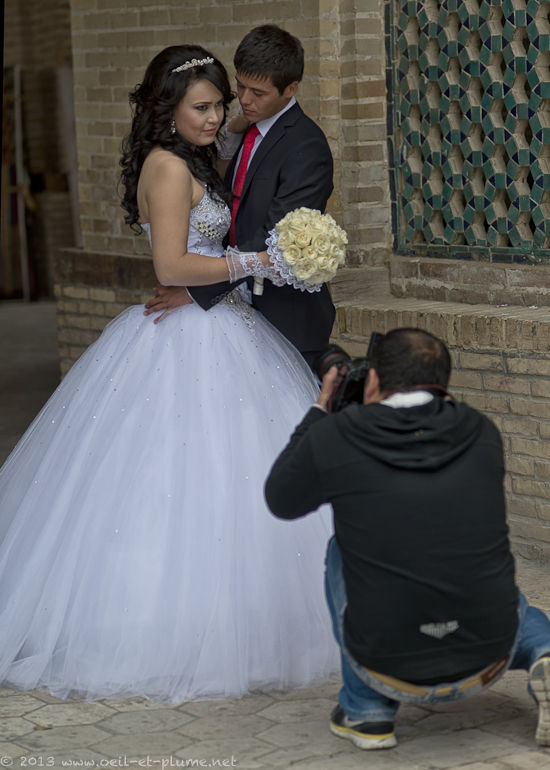

Time for me to leave Bukhara for Samarkand. Before setting off, I run one more time to the Kalyan minaret. The leaning brick monument is backed by a beautiful sunset light. Nearby, social life as anywhere else in town.

I take off my hat to the charming Bukhara.
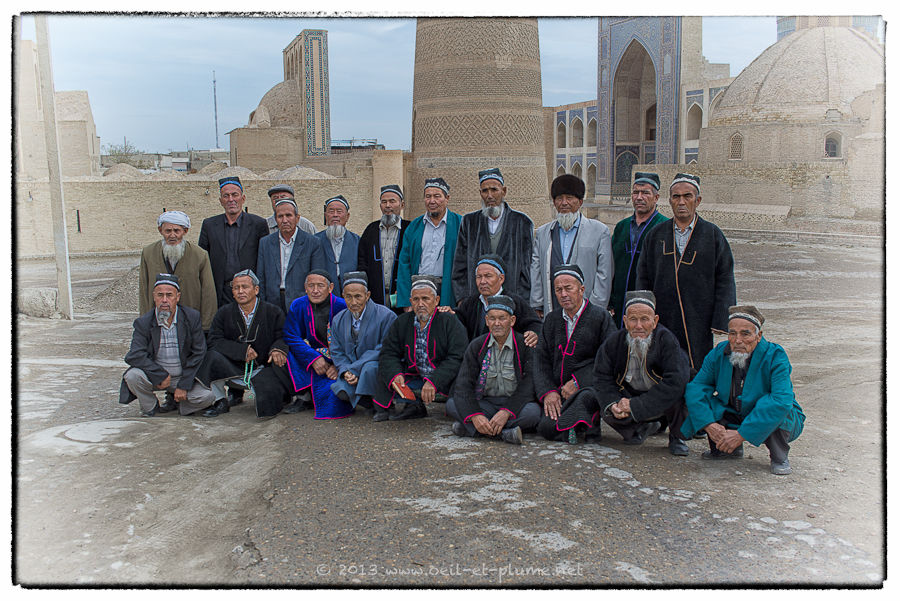
Cheers,